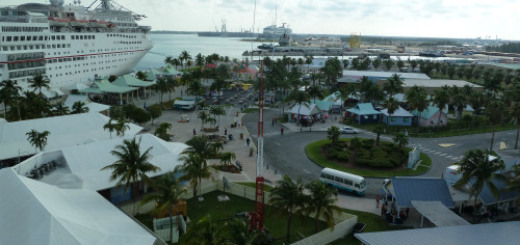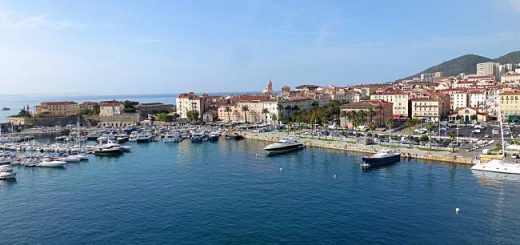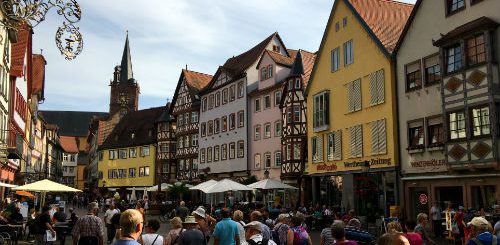Córdoba and La Mezquita

Ask anyone who has been to Córdoba what is the most important attraction and they will tell you – La Mezquita! This was one of the most impressive mosques in Spain during the occupation by the Moors. So beautiful, in fact, that when the Catholic Church regained dominance in the city, it was decided to keep much of the structure intact, creating a Christian cathedral within its walls. Back in 2010 when we first toured Spain, by car, we arrived in Córdoba after the Mezquita had closed for the day and since we were due in Mijas on the Costa del Sol that night, we had no other opportunity to see it. I was so upset I vowed to try again someday. So when our cruise on HAL Rotterdam called in to Málaga and offered passengers a day trip to this wonderful city, I jumped at the chance. Since it would be a long bus ride “just to see another church!”, Hubby decided not to go – so I went without him!
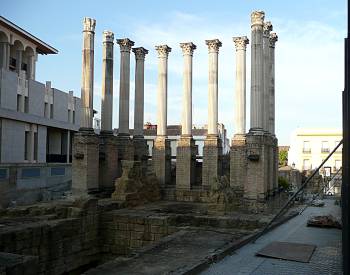
Córdoba was founded by the Romans and due to its strategic importance as the highest navigable point of the Guadalquivir River, it became a port city of great importance, used for shipping olive oil, wine and wheat back to Ancient Rome. Near the town hall stand the Corinthian columns of a Roman temple, whose foundations and altar remain intact, that once honored the emperor Augustus, who lifted the city out of poverty.
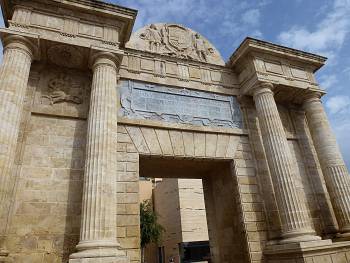
The Romans also built the mighty bridge crossing the river, now called El Puente Romano. At the northern end, the Puerta del Puente is a triumphal arched gate, originally of Roman and later Moorish construction, but rebuilt in the time of Philip II of Spain in the 16th century.
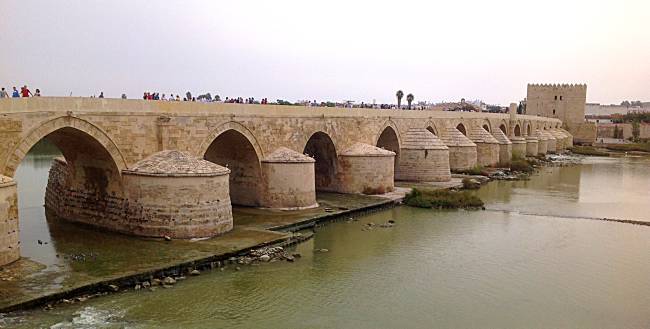
The Tower of La Calahorra rises up at the southern end of the bridge, the far end from the city centre. It is a fortified gate originally built by the Moors and extensively restored during the Middle Ages. Our tour bus dropped us off near the bridge – the closest bus access to the Mezquita.
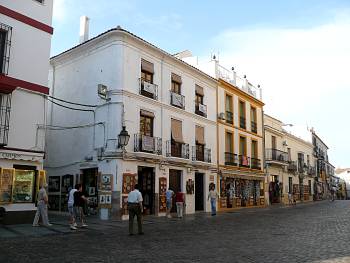
We made our way to the northern end of the huge rectangle of walls which enclose the Mezquita, to the Calle Cardenal Herrero where there are bars and gift shops catering to the many tourists, as well as the main entrance to the cathedral precinct.
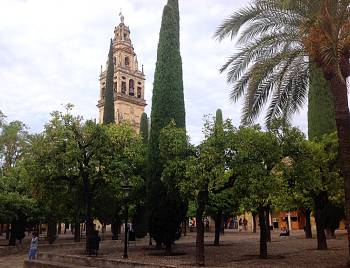
Once inside the wall we were amazed to find ourselves in an orange tree courtyard dominated by a tall belfry which encloses the former minaret.

Inside the mosque itself it is truly a sight to behold. The oft photographed arches grace the zullah or prayer hall, while deep in the centre of the complex you are suddenly transported to an ornate Renaissance cathedral. The cathedral can actually trace its origins back to the time of the Visigoths. Built over the remains of a Roman temple, the basilica of San Vicente was in turn destroyed by the Moors, who began construction of the mosque in 785 and continued expanding and decorating it for about 200 years.
The striking red and white striped arches, employing 856 columns made of marble, onyx, jasper and granite, form the main structure of the prayer hall, with an ornate mihrab or apse – unusually – at the southern end.

This prayer niche is richly gilded with mosaics depicting geometric and flowing designs of plants.

Following the reconquest of Córdoba by King Ferdinand III in 1236 the cathedral was dedicated to the Virgin Mary, with the ceremony taking place inside a new central chapel, the Chapel of Villaviciosa. Subsequent Kings advanced further renovations and additions, the most notable being the creation of the main chapel, transept and choir, begun in 1523.
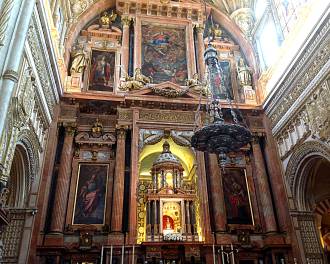
Just as the previous occupants had incorporated Hispanic and Roman features into the mosque, so now the Mudejar features were integrated within the Gothic, Renaissance and Baroque styles.
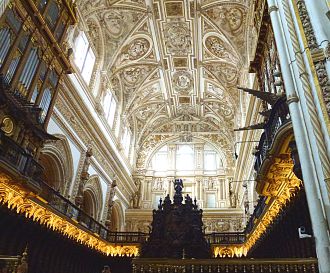
The Renaissance main altar stands out in contrast to its surroundings, while the Baroque choir was covered in a vault inspired by the Sistine Chapel.
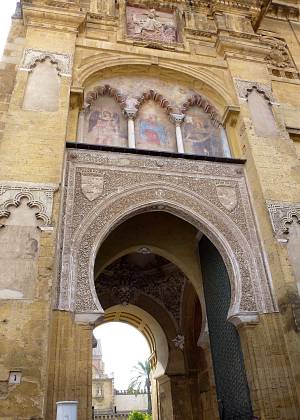
Various chapels and altars are to be found around the walls, containing the remains of Kings and other wealthy patrons. On the exterior walls of the complex are a number of highly decorated doors, most left in their original design, unlike the Puerta del Perdón (the Door of Forgiveness) – the main entrance – which had been decorated with frescoes of Jesus and the Archangels.

Following a lunch of seafood paella in a pretty courtyard restaurant, we were taken on a walking tour of some of Córdoba’s most interesting streets. The city is very proud of its courtyards and gardens and has an annual competition, which is taken very seriously.

The Calle de los Flores is the most famous as the cheerful pot plants frame a view of the cathedral’s bell tower in the distance.
Then there was just enough time for some souvenir shopping before setting off back to the ship in Málaga. It was a long day but I was very pleased I made it at last!
Related articles
- Cordoba travel tips: Where to go and what to see in 48 hours (independent.co.uk)
- Al Andalus – Spain (espliego.wordpress.com)


